Muppet is seriously considering retirement, seeing your level of expertise! You have nailed the previous two cases. We hope you diagnose the following one just as well: 45-year-old man with vague chest pains.
1. Aortic aneurysm
2. Intrathoracic goiter
3. Thymoma
4. None of the above
Findings: PA chest radiograph shows a superior middle mediastinal mass (Fig. 1, arrows), displacing the trachea. Mass is not well seen on the lateral view. The most common diagnosis should be an endothoracic goiter, but remember that a vascular structure should always be ruled out with enhanced CT.
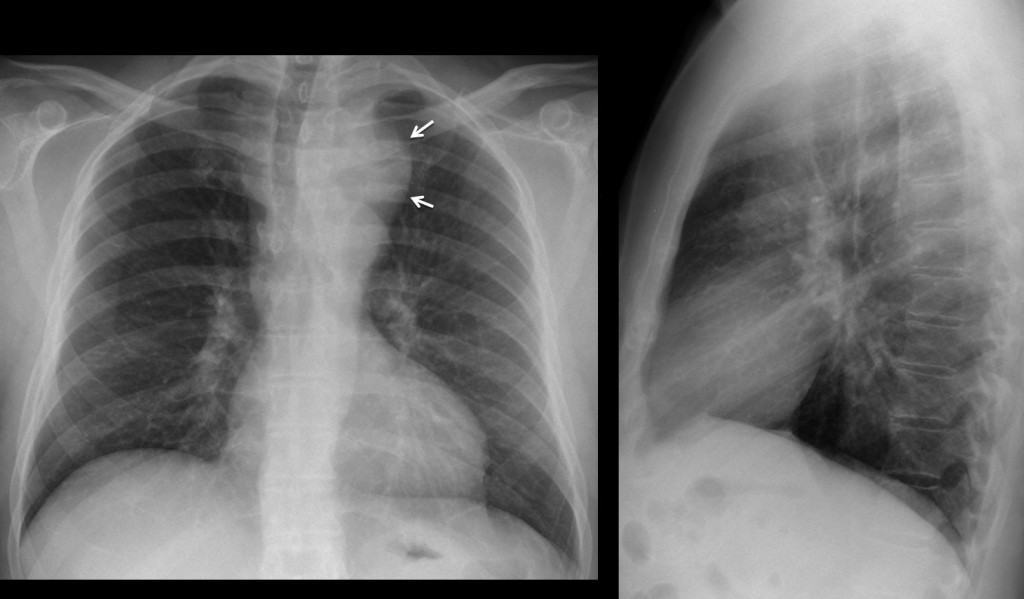
Fig. 1
Coronal CT demonstrates that the mass corresponds to a dilated aortic arch (arrow), located higher than usual (Fig. 2A, arrow). On the oblique reconstruction, the high aortic arch is easily seen, as well as an indentation (Fig. 2B, arrow) at the junction of the aneurysmatic arch and the descending aorta.
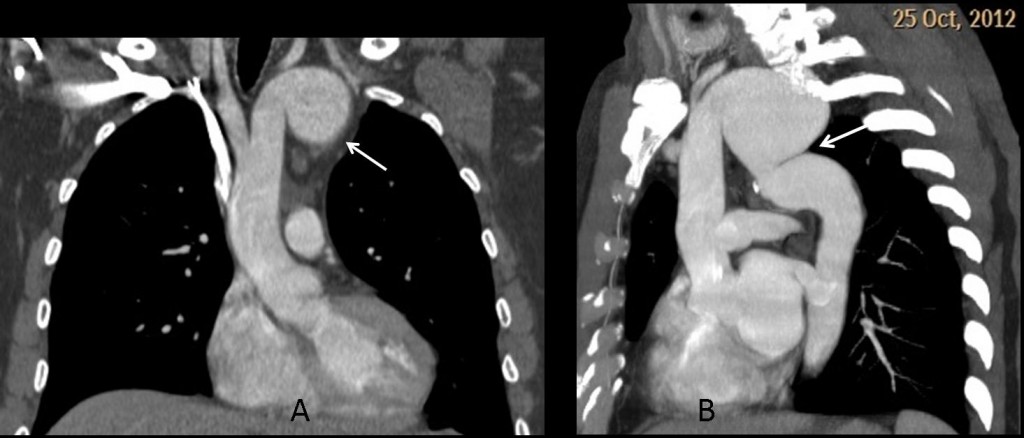
Fig. 2
Final diagnosis: aortic pseudocoarctation with aneurysm of the aortic arch.
Pseudocoarctation of the aorta occurs when the aortic arch originates from the 3rd arch, instead of the 4th. In this condition, the aortic arch is higher than usual, with a kinking at the union of the aortic arch and descending aorta, simulating aortic coarctation. Rib notching is absent and systemic hypertension is not present. This condition is unusual and I have seen several cases, but none with aneurysm, which was discovered when seeing this patient a few weeks ago. This demonstrates that we should always be ready for the unexpected!
Congratulations to Dr. Froso, who gave an excellent discussion.
Teaching point: remember that the mediastinum is composed basically by vessels. When seeing a mediastinal mass on the plain film always perform an enhanced CT to rule out a vascular origin.
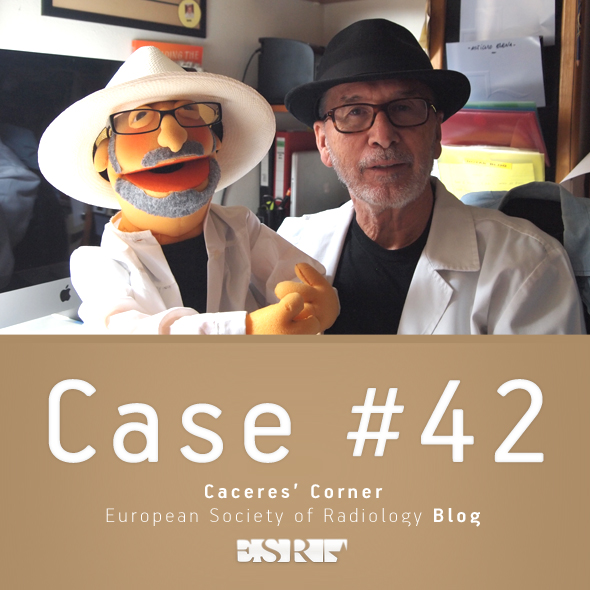
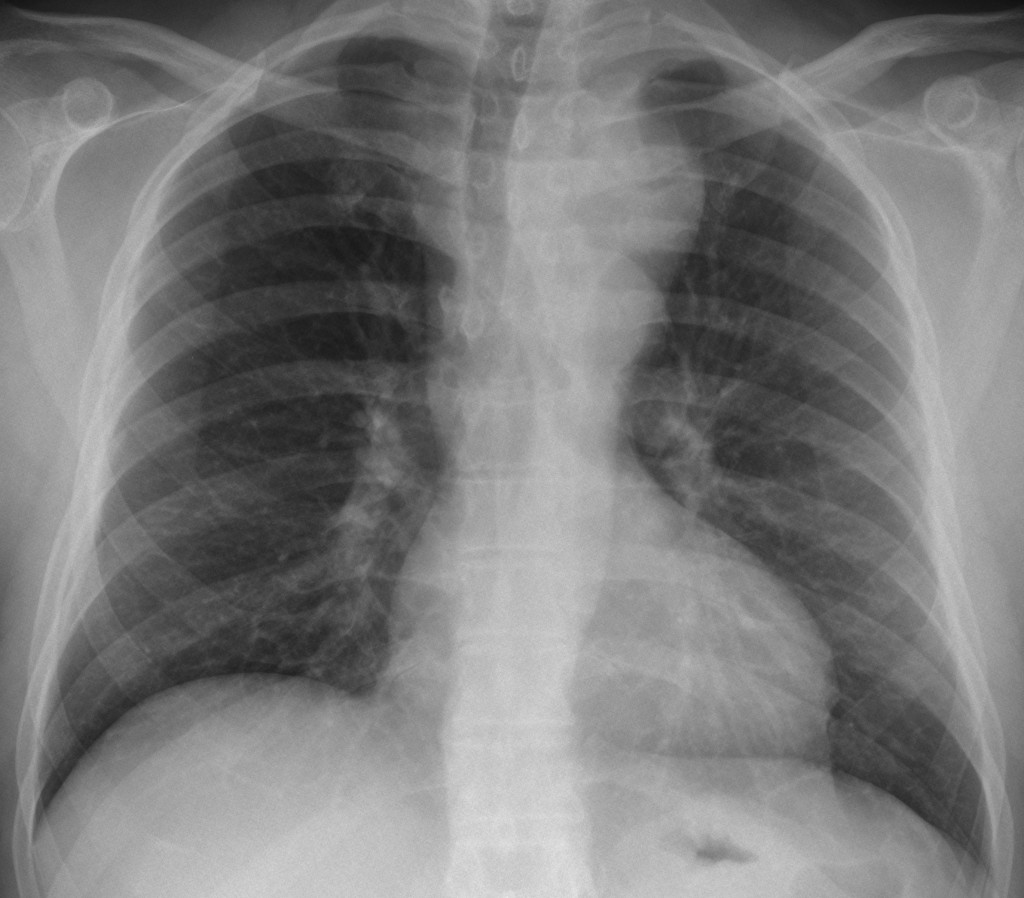
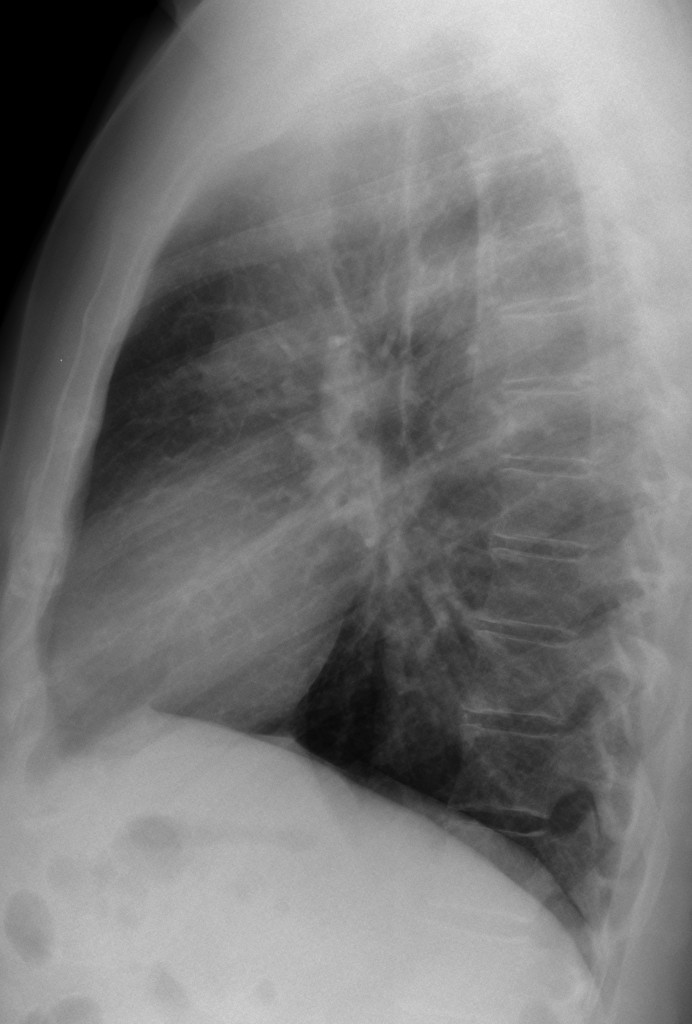




I’d go for thymoma rather then thyorid goiter. Great hats!
Thyroid goiter.
Intrathoracic Goiter
endothoracic goiter because the trachea is displaced to the right and on the lateral view the pretracheal space is occupied
Muppet, do not retire, please!
I’d go for intrathoracic gotier too.
Gozzo intratoracico, che impronta e disloca la trachea verso dx, mentre lo spazio chiaro retrosternale è libero.PS. La pensione è bella se vissuta con gli hobby preferiti: i nipoti e la squadra del cuore( sono anche medico-sportivo:la mia 3 specializzazione)!
Gozzo endotoracico che impronta e disloca a dx la trachea ed impegna l’outlet toracico.PS: la pensione è bella, perche si ha più tempo libero per studiare la propria materia, più tempo per la libera professione, più tempo per i propri nipoti e più tempo per la ……squadra del cuore!!!!!Sono in pensione da 10 anni!!!!
Muppet congratulates you. Your status is enviable! on the other hand: is goiter the only cause of tracheal displacement? Is Muppet naïve?
Il gozzo endo-toracico non è la sola causa di impronta e dislocazione tracheale: ad es. anche una cisti broncogena mediastinica.
Occupation of the aorto-hilar space from a mass.
There is occupation of the aorto-hilar space from a mass
Afraid this time you all are not thinking properly. Which should be your first condideration when discovering a mediastinal mass?
…when we see a mediastinal mass we should determined from which of the mediastinal spaces arises. In this case it seems that is located in the superior middle mediastinal space, so, considerations for endothoracic goiter,duplication cyst,ganglia,vascular anomaly should be taken into account.
Thanks for your clues, Dr. Caceres
I’m reconsidering my first answer. The mass doesn’t surpase the clavicles, so intrathoracic gotier or cystic lymphangioma can be ruled out.
Possible tumors are timoma, germ cells tumors, etc.
However, we know Muppet is annoyed so that the case has to be very difficult
Aneurism?
Of your comments, thymoma and germ-cell tumors can be excluded because the mass is in the middle mediastinum (pushes the trachea). How will you explain an aneurysm so high up in the mediastinum?
It might involve the aortic arch…explaining it’s high location.
Or it might be saccular as opposed to fusiform.
Think of a high location of the aortic arch
Cervical aortic arch?
That’s more common on the right….although obviously it can also present on the left.
Pseudocoarctation may be a good option
Hello, I am a new fan of your web corner and I find it very exciting!
About case 42: Lesion is in the superior mediastinum and has distinct upper borders. That means it is not in the anterior mediastinum.
Also, according to the “silhouette sign” the lesion not located posteriorly (because aortic arch/descending aorta are posterior structures).
Therefore, the lesion is in the middle superior mediastinum, with deviation of the trachea to the right. The largest portion of the lesion is left to the midline, and a smaller right.
In the lateral X-ray there is no deviation of the trachea in the anteroposterior axis (that means that a lesion such a retrotracheal goiter should be excluded, because it would shift the trachea anteriorly). Furthermore, this superior location is not typical for a middle mediastinal mass such a bronchogenic cyst, etc.
Answers 2 and 3 are out.
This must be a vascular lesion which occupies the middle mediastinum.
Possible diagnoses:
-aneurysm of the aortic arch (BUT considering the patient’a age this is not very likely, since saccular-atherosclerotic aneurysms are more often in the elderly with hypertension).
So my finally vascular diagnosis would be pseudocoarctation of the aorta ( coarctation should be ruled out because the is no rib notching in the PA chest and in the lateral Xray there are no signs of enlarged collateral vessels in the anterior mediastinum).
(I hope that Muppet will be not too tired and bored from these long comments of a mainly musculoskeletal radiologist…, but who still loves the classics!)
For a MSK guy, you did very well. Congratulations
Linfoma!
Cervical aortic arch?
That’s more common on the right….although obviously it can also present on the left.
If this were a cervical aortic arch, it would be left sided…another finding favouring the latter is the anterior tracheal displacement…which in such a case would be displaced anteriorly by the high positioned aortic arch.
The descending aorta in this case is also left sided.
There is also a convexity on the right paratracheal. I would think of a right aberrant subclavian artery with a big Kummerell diverticulum.
Non avevo mai visto questa patologia e sono grato al ” galattico” per avere colmato questo mio vuoto.La diagnosi finale, dopo i suggerimenti, anche dei colleghi, dovrebbe essere la seguente:Arco aortico cervicale, tipo D sec.Haughton. ” radiologia medica” n.96,630-6333,1998.F.Schiavon e coll.
Thanks for calling me “galacttico” I’ll rather be compared with Messi!
For me, the answer is intrathoracic gotier
and I hope, The muppet do not retire!
Old soldiers do not retire, they just fade away…